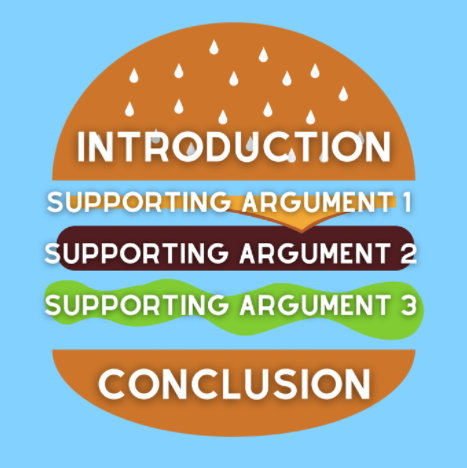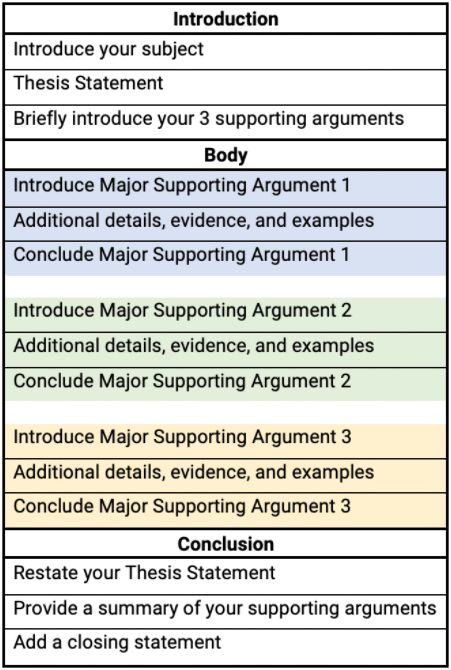
Like many other skills, writing great essays requires a lot of time and practice. Essays are used to assess critical and analytical thinking skills. It’s your chance to share your thoughts and opinions in written form. There are many different types of essays, such as research essays, argumentative essays, comparison essays, and so on. Although each essay style may be different, they all include similar components and have the same general structure. Check out our tips below on how to write a great essay.
- Organize your thoughts and do some research.
- Well-written essays need to be well-organized and have solid, relevant arguments.
- The best way to start is by organizing your ideas and opinions.
- Use a blank sheet of paper, or type on your computer. Write down everything you know about your topic and clearly state your opinion.
- Once your brainstorming is complete and all your thoughts are on paper, do some research to answer any questions you may have about your topic.
- For instance, if you are writing an argumentative essay about climate change, try finding statistics and numbers on Greenhouse Gas emissions to support your argument.
- To cover your bases, ask yourself, “so what?” when writing down your arguments. Answering this question will help you strengthen your claims.
- Consider any counter-arguments a reader may have while reading your essay. Write down ideas that make your perspective stronger than opposing views.
- Make sure you save information about the resources you’ve used while doing your research. You’ll need to cite your sources in your essay.

- Plan your structure.
- As we mentioned before, there are many essay styles, but each style follows the same general structure: Introduction, Body, and Conclusion.
- The structure of an essay can be thought of as a hamburger. The buns are the introduction and conclusion, and the patty, lettuce, and cheese make up the body.
- Once your brainstorming is complete, begin organizing your content and identifying the main idea of your essay.
- The main idea of your essay is called a Thesis Statement. Your thesis statement typically appears in your introduction and is followed by three major supporting arguments.
- Once you have a thesis statement, it’s time to organize the body of your essay. The body is split into three parts, allowing you to elaborate on each of your supporting arguments.
- Select your three major supporting points and add more detail. You need to provide evidence and examples to solidify your argument.
- The body of your essay is your chance to convince the reader to support your ideas and entice them to continue reading.
- Using facts and statistics from reliable sources is an excellent way to keep your reader engaged while also backing your arguments.
- Finally, your conclusion involves restating your thesis and briefly touching on your three major arguments. Add a final comment that leaves your reader wanting to learn more.

- Start writing: Introduction.
- Now that you have completed your brainstorm and planned the structure of your essay, you’re ready to start writing.
- To begin with your introduction, think of a sentence or two that will hook your reader. It’s essential to capture your reader’s attention when your essay begins.
- Provide your reader with any relevant background information they need to properly understand the content they will be reading.
- For instance, if your essay discusses climate change and Greenhouse Gases, include a brief explanation of each concept.
- Once your reader has all the necessary information to read your essay, you can state your thesis. Your thesis should be one sentence that clearly indicates the topic of your essay.
- Your introduction will end by briefly listing your three major arguments.
- Do not go into any detail about your arguments in your introduction. You will have the opportunity to do so in your body paragraphs.
- Start writing: Body.
- Your body includes three sections that elaborate on each major argument. Begin your first section by stating your first argument.
- Add details, evidence, and examples to support your claims.
- As we’ve mentioned before, adding facts and statistics is an excellent way to strengthen your essay.
- After stating your facts or statistics, analyze it and explain why it supports your claims.
- Discuss any ideas that oppose your argument. Doing so will show the reader that you’ve considered other perspectives and have evidence that your ideas are better.
- As you continue to introduce more evidence and details, use transition words to connect your ideas. Transition words help give essays a good flow and allow your readers to follow with ease.
- Some examples of transition words are: nevertheless, alternatively, in addition, in other words, etc.
- Conclude your first section by summarizing what you’ve just discussed. Use different words to avoid repeating yourself.
- Make sure you add in-text citations to credit the resources that provided you with the information used in your essay.
- Continue writing your second and third major arguments.
- Start writing: Conclusion.
- The purpose of the conclusion is to bring all your ideas together and summarize your thoughts.
- Do not introduce any new information in your conclusion.
- Restate your thesis and summarize your major arguments. Try to avoid directly repeating what was said in your introduction.
- Your final closing statement should explain why your topic is of importance and why your arguments matter.
- Leave your reader with an impactful and memorable finish to your essay.
- Your conclusion should not be longer than your introduction or your body paragraphs.
- Review your essay.
- Once you’ve finished your first draft, step away from your essay and clear your mind. Have a snack or do some exercise before reviewing your work.
- As you were writing your essay, you may have altered your thesis statement or your introduction paragraph. Don’t worry. This is completely normal. Make sure you adjust the rest of your essay if you’ve made dramatic changes.
- Look for any grammar or punctuation mistakes as they often go unnoticed.
- Ask yourself if the information is clear and concise? Is it well-organized? Does your essay strongly support your ideas?
- Once you’re happy with your work, ask a friend, your parent, or your teacher to proofread your essay. They can offer you a reader’s perspective and any suggestions to further strengthen your writing.
- Review your essay one last time to make sure you’ve correctly cited your sources and have listed each resource on your reference page.
- Follow the documentation style given by your teacher (MLA, APA, etc.) when citing your sources.
Writing a great essay doesn’t happen in a single afternoon. Give yourself lots of time to prepare and plan out your work before you begin writing. If you follow the tips above, you’ll have everything you need to write a great essay. Writing essays may be more difficult for some students than others. If you or someone you know struggles with writing, don’t be afraid to ask for help. Here at Success Tutorial School, we offer a number of English programs and Creative Writing Workshops. Contact us today to learn about how we can help you achieve success in your writing!


